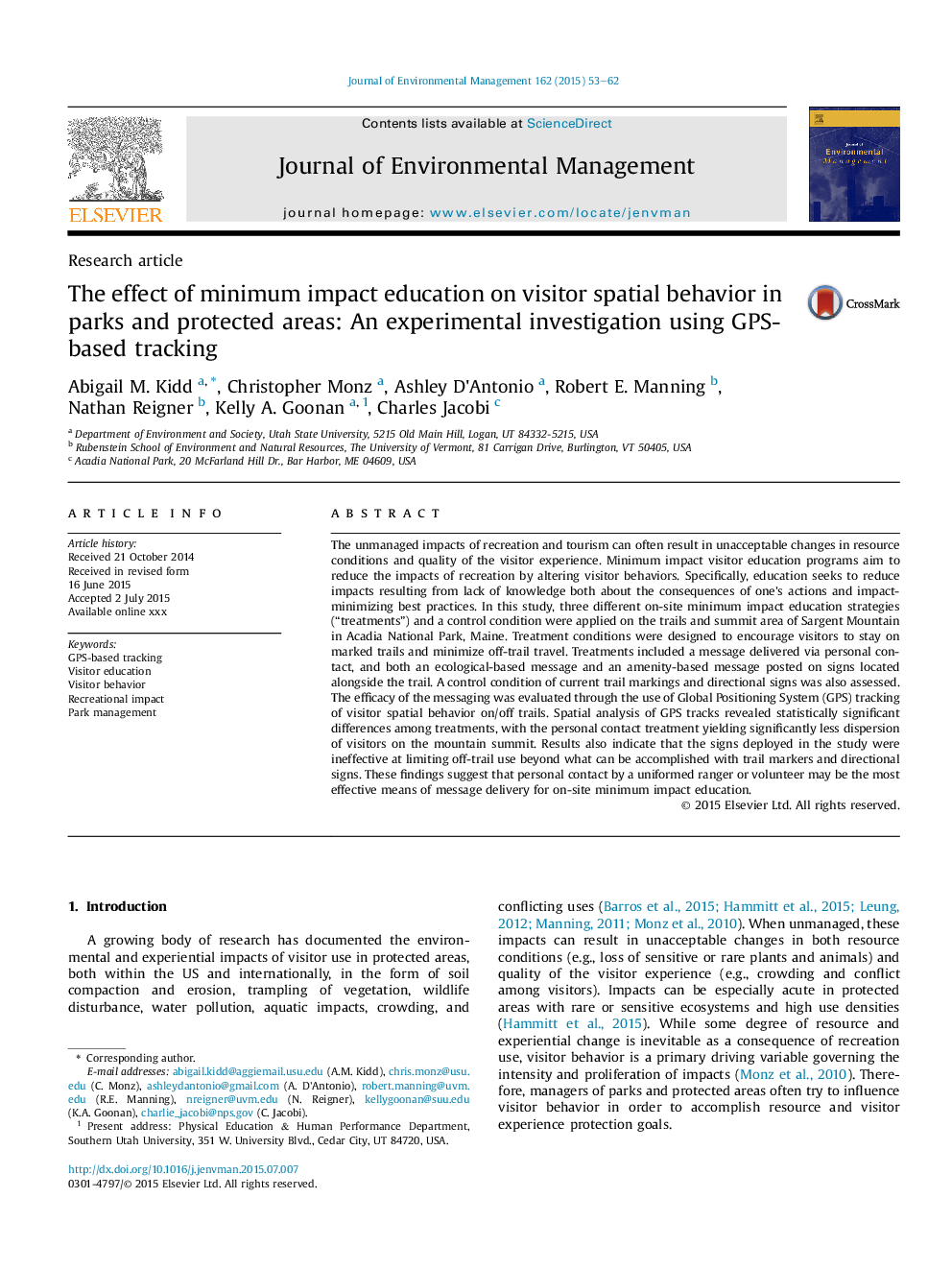| Article ID | Journal | Published Year | Pages | File Type |
|---|---|---|---|---|
| 7481440 | Journal of Environmental Management | 2015 | 10 Pages |
Abstract
The unmanaged impacts of recreation and tourism can often result in unacceptable changes in resource conditions and quality of the visitor experience. Minimum impact visitor education programs aim to reduce the impacts of recreation by altering visitor behaviors. Specifically, education seeks to reduce impacts resulting from lack of knowledge both about the consequences of one's actions and impact-minimizing best practices. In this study, three different on-site minimum impact education strategies (“treatments”) and a control condition were applied on the trails and summit area of Sargent Mountain in Acadia National Park, Maine. Treatment conditions were designed to encourage visitors to stay on marked trails and minimize off-trail travel. Treatments included a message delivered via personal contact, and both an ecological-based message and an amenity-based message posted on signs located alongside the trail. A control condition of current trail markings and directional signs was also assessed. The efficacy of the messaging was evaluated through the use of Global Positioning System (GPS) tracking of visitor spatial behavior on/off trails. Spatial analysis of GPS tracks revealed statistically significant differences among treatments, with the personal contact treatment yielding significantly less dispersion of visitors on the mountain summit. Results also indicate that the signs deployed in the study were ineffective at limiting off-trail use beyond what can be accomplished with trail markers and directional signs. These findings suggest that personal contact by a uniformed ranger or volunteer may be the most effective means of message delivery for on-site minimum impact education.
Keywords
Related Topics
Physical Sciences and Engineering
Energy
Renewable Energy, Sustainability and the Environment
Authors
Abigail M. Kidd, Christopher Monz, Ashley D'Antonio, Robert E. Manning, Nathan Reigner, Kelly A. Goonan, Charles Jacobi,
